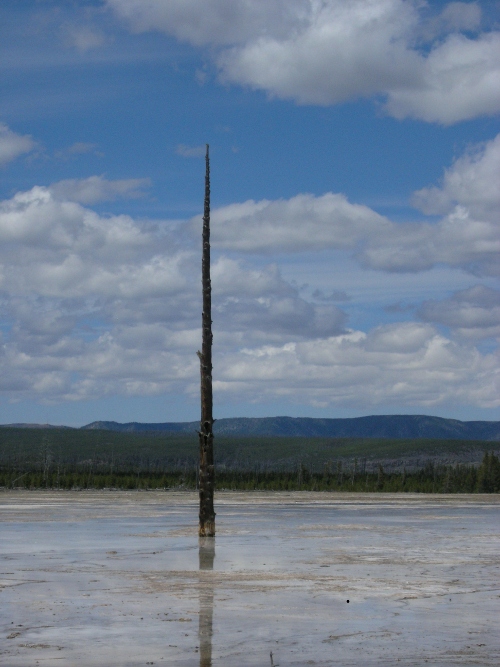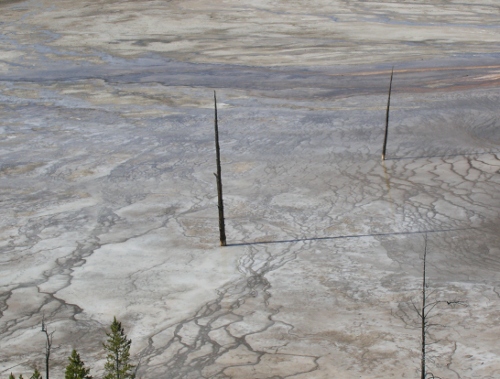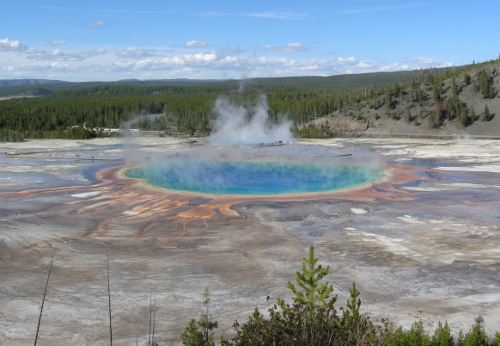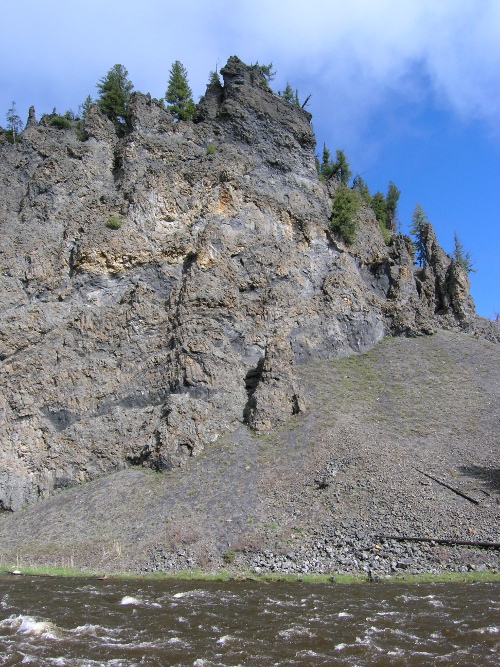![]() Give yourselves a pat on the back: virtually everyone guessed correctly that my fortnight away was chiefly spent exploring Yellowstone National Park, bookended by some time in Grand Teton National Park just next door. The first photo I showed you was of a dead tree standing in a growing expanse of silica deposited by a nearby hot spring*. The spring in question is the Grand Prismatic Spring, which is the third largest hot spring in the world, and even looks pretty from space.
Give yourselves a pat on the back: virtually everyone guessed correctly that my fortnight away was chiefly spent exploring Yellowstone National Park, bookended by some time in Grand Teton National Park just next door. The first photo I showed you was of a dead tree standing in a growing expanse of silica deposited by a nearby hot spring*. The spring in question is the Grand Prismatic Spring, which is the third largest hot spring in the world, and even looks pretty from space.



The Grand Prismatic Spring
The second photo is of a rhyolite lava flow in the Firehole Canyon. Rhyolite lavas are extremely viscous, as illustrated nicely by the intensely deformed flow banding in this outcrop – it hasn’t so much flowed, as oozed. This flow occured within the Yellowstone caldera some time after it was excavated by the last big explosive eruption 640,000 years ago.


Perhaps it was pretty obvious in hindsight – but I didn’t expect you all to be all so North America-centric that you wouldn’t guess one of the world’s other geothermal areas. Maybe the pine trees were too much of a giveaway. Regardless, I saw plenty of awesome geology whilst I was away – and I’m planning to share the highlights with you all over the next few weeks.
*incidentally, I may just have a big hole in my mineralogical knowledge (which is entirely possible), but I swear I’ve never heard hydrothermally deposited silica referred to as ‘geyserite’ before. Is this usage limited to North America, perhaps?



Comments (5)
Links (1)-
Pingback: Friday-ish focal mechanisms | Highly Allochthonous